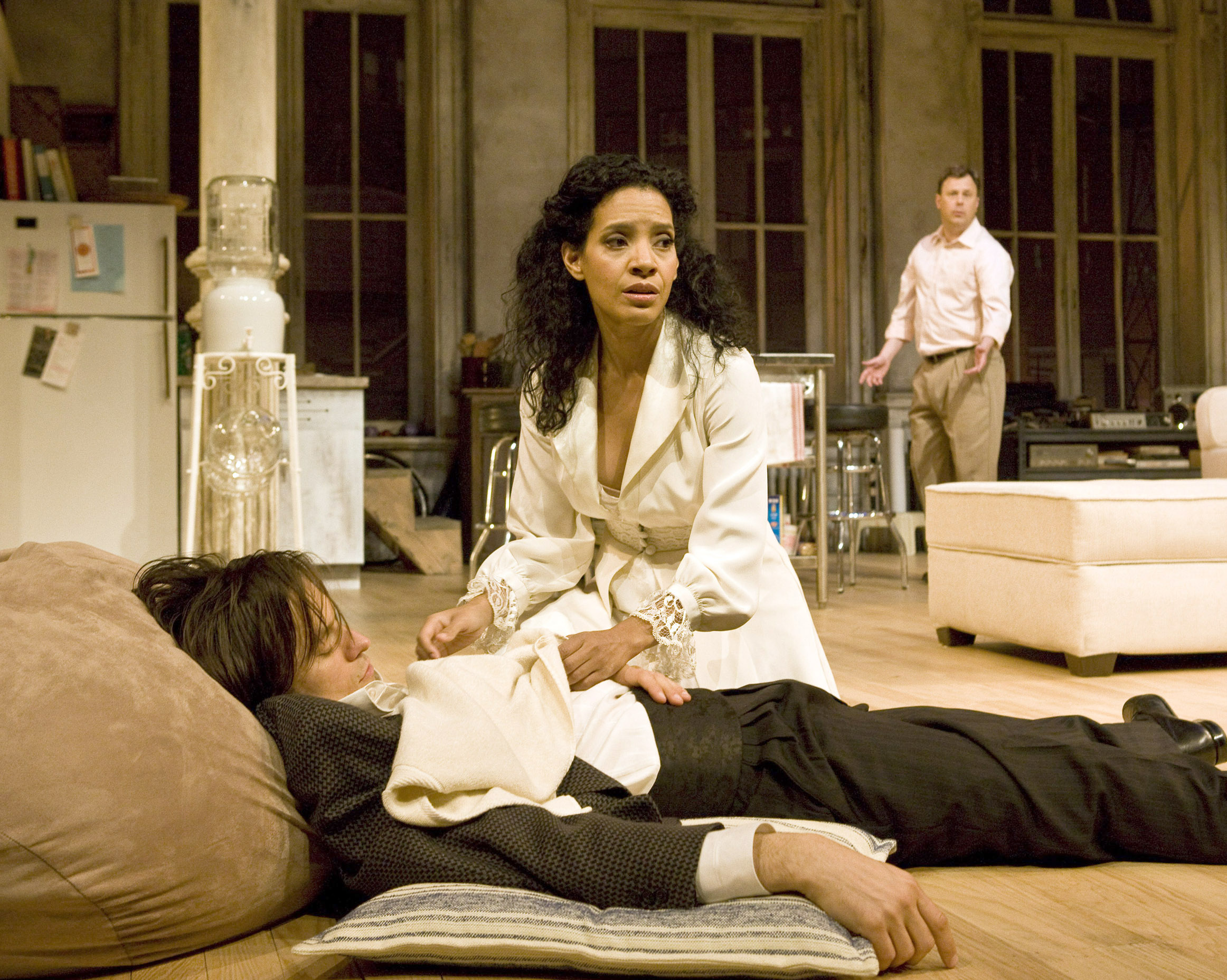Just following the drowning death of Robbie, a talented dancer, “Burn This” opens in a cloud of emotion.
Nicholas Martin’s direction of Pulitzer Prize winner Lanford Wilson’s play runs through May 1 at the Mark Taper Forum, where it had its world premiere nearly 25 years ago.
Set in an airy bohemian New York loft apartment, the play focuses on the effects of the tragedy on those Robbie has left behind ““ his roommates, Larry (Brooks Ashmanskas) and Anna (Zabryna Guevara), the latter of which is also Robbie’s grieving dance partner.
While audiences never see beloved Robbie, Robbie’s brother and supposed mirror image soon enters. Jimmy (Adam Rothenberg), nicknamed “Pale” for his alcoholic vice of choice, however, is Robbie’s opposite.
Arriving drunk and unannounced in the wee hours of the morning to pick up Robbie’s belongings, Pale is gruff and vulgar. Rothenberg’s delivery is effective, as antagonist Pale comes across as an irritating bully with an attitude. However, Anna is undeniably attracted to her best friend’s brother and unrelenting to his advances, despite his unruly behavior.
The one-night stand fades from memory as Anna begins to delve into her choreography and offers a critique of Burton’s (Ken Barnett) screenplay drafts as the play develops a modern image of romance and reality.
The set design likewise mimics this reality with a central couch and coffee table taking center stage, offset by a kitchen, beanbag and bedroom door. Beautiful gray-blue lighting paints the apartment’s high-rise windows from dawn to dusk, among the many subtle details that seamlessly tie the play’s scenes together. Conversation and human connection are the play’s highlight.
The play’s title and perhaps most resonating lines come from Burton as he advises Anna to draw from personal experiences as she dances, much like the way one writes genuinely.
“You can’t imagine a feeling everyone hasn’t had. Make it personal, tell the truth, and then write “˜burn this’ on the bottom.”
When the emotionally crazed Pale later returns on New Year’s Eve, Anna is torn between her affections for her casual boyfriend Burton and her desire for Pale. And when Pale reveals their affair to Burton mid-punch, the play takes its most dramatic turn.
Anna’s emotionally twisted relationship drives her to the edge, as she pushes both men away and throws herself into her modern dance choreography, at last drawing from her own experiences.
The play’s ending comes as a surprise as roommate Larry graduates from comic relief to playing the most pivotal role in determining Anna’s fate.
Ultimately, the play’s true strength comes from the cast’s strong chemistry as broken characters who come across as real individuals coping with love and loss.
““ Lauren Roberts
Email Roberts at lroberts@media.ucla.edu.
